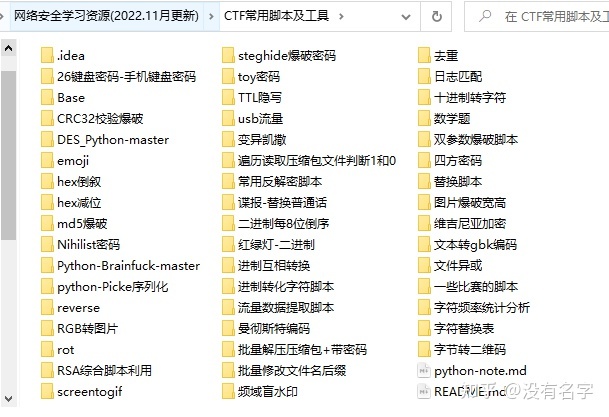*函数名:fopen
*函数功能:流打开函数(打开一个文件流)
*函数参数:
* const char *path:带路径的文件名
* const char *mode:打开方式
*函数返回值:FILE *:成功返回打开的流指针,失败返回NULL,并且返回错误码
*/
FILE *fopen(const char *path, const char *mode);
The argument mode points to a string beginning with one of the follow‐
ing sequences (Additional characters may follow these sequences.):
r Open text file for reading. The stream is positioned at the
beginning of the file.(以读方式打开文本文件,流指针定位在文件开头)
r+ Open for reading and writing. The stream is positioned at the
beginning of the file.(以读写方式打开文件,流指针定位在文件开头)
w Truncate file to zero length or create text file for writing.
The stream is positioned at the beginning of the file.(以擦除方式打开文件或创建文件,该文件只能被写入,流指针定位在文件开头)
w+ Open for reading and writing. The file is created if it does
not exist, otherwise it is truncated. The stream is positioned
at the beginning of the file.(以读写方式打开或创建文件,该文件会被擦除,流指针定位在文件开头)
a Open for appending (writing at end of file). The file is cre‐
ated if it does not exist. The stream is positioned at the end
of the file.(以追加的方式在文件末尾写数据,如果文件不存在,则创建,流指针定位在文件末尾)
a+ Open for reading and appending (writing at end of file). The
file is created if it does not exist. The initial file position
for reading is at the beginning of the file, but output is
always appended to the end of the file.(以读写追加的方式打开,文件不存在就创建,读指针在文件头,写指针在文件末尾)
The mode string can also include the letter 'b' either as a last char‐
acter or as a character between the characters in any of the two-char‐
acter strings described above. This is strictly for compatibility with
C89 and has no effect; the 'b' is ignored on all POSIX conforming sys‐
tems, including Linux. (Other systems may treat text files and binary
files differently, and adding the 'b' may be a good idea if you do I/O
to a binary file and expect that your program may be ported to non-UNIX
environments.)针对于非unix类操作系统,想要读取二进制文件,可以加字母b
创建文件
读取文件
fread
/*
*函数名:fread
*函数功能:从文件流中读出内容
*函数参数:
* void *ptr:想要存储读出数据的内存首地址
* size_t size:想要读取块所占的大小
* size_t nmemb:想要读取的块的个数
* FILE *stream:被读的文件流指针
*函数返回值:int:成功返回读成功块的个数,否则返回EOF或者0或者其他值。
*/
size_t fread(void *ptr, size_t size, size_t nmemb, FILE stream);
往文件中写入数据
fwrite
/
*函数名:fwrite
*函数功能:往文件流中写入内容
*函数参数:
* void *ptr:存储想要写的数据的内存首地址
* size_t size:想要写的块所占的大小
* size_t nmemb:想要写的块的个数
* FILE *stream:被写的文件流指针
*函数返回值:int:成功返回写成功块的个数,否则返回EOF或者0或者其他值。
*/
size_t fwrite(const void *ptr, size_t size, size_t nmemb,
FILE stream);
关闭文件
fclose
/需要添加的头文件/
#include <stdio.h>
/
*函数名:fclose
*函数功能:关闭一个文件流
*函数参数:
* FILE *:想要关闭的流指针
*函数返回值:int:成功返回0,失败返回错误码
*/
int fclose(FILE fp);
文件重定位:
fseek
/
*函数名:fseek
*函数功能:
*函数参数:
* FILE *stream:被重定位的文件流指针
* long offset:是相对于基准的偏移量
* int whence:基准
*函数返回值:key_t:成功返回0,否则返回-1或者错误码。
*/
int fseek(FILE *stream, long offset, int whence);
基准值的取值:
SEEK_SET:文件头
SEEK_CUR:当前流指针的位置
SEEK_END:文件末尾
offset > 0:往文件末尾的方向移动
offset < 0:往文件头的方向移动
ftell
/*
*函数名:ftell
*函数功能:
*函数参数:
* FILE *stream:想要获取位置的文件流指针
*函数返回值:long:返回文件流指针的位置
*/
long ftell(FILE *stream);
注意:打开文件和关闭文件配对存在,使用完就得关闭
如何判断是否到文件末尾:
feof()
时间处理:
linux下C获取系统时间的方法:
asctime(将时间和时间以字符串格式表示)
相关函数:
time
ctime
gmtime
localtime
/需要包含的头文件/
#include <time.h>
/*
*函数名:time
*函数功能:返回从 1970-01-01 00:00:00 +0000 (UTC).到现在的秒数。
-
如果参数t非空,返回值也会存入t中。
*函数参数:
-
time_t *t:t是一个time_t类型的指针,指向的内存空间用于存储秒数。
*函数返回值:成功返回从1970年到现在的秒数,失败返回-1/错误码
*/
time_t time(time_t *t);
/需要包含的头文件/
#include <time.h>
/*
*函数名:ctime
*函数功能:将日期和时间转换为Broken-down时间或ASCII
*函数参数:
-
time_t *timep:从time函数获取到的时间
*函数返回值:char *成功返回时间的描述,失败返回NULL
*/
char *ctime(const time_t *timep);
Broken-down time is stored in the structure tm which is defined in
<time.h> as follows:
struct tm {
int tm_sec; /* seconds /
int tm_min; / minutes /
int tm_hour; / hours /
int tm_mday; / day of the month /
int tm_mon; / month /
int tm_year; / year /
int tm_wday; / day of the week /
int tm_yday; / day in the year /
int tm_isdst; / daylight saving time */
};
The members of the tm structure are:
tm_sec The number of seconds after the minute, normally in the range
0 to 59, but can be up to 60 to allow for leap seconds.
tm_min The number of minutes after the hour, in the range 0 to 59.
tm_hour The number of hours past midnight, in the range 0 to 23.
tm_mday The day of the month, in the range 1 to 31.
tm_mon The number of months since January, in the range 0 to 11.
tm_year The number of years since 1900.
tm_wday The number of days since Sunday, in the range 0 to 6.
tm_yday The number of days since January 1, in the range 0 to 365.
tm_isdst A flag that indicates whether daylight saving time is in
effect at the time described. The value is positive if day‐
light saving time is in effect, zero if it is not, and nega‐
tive if the information is not available.
例子:(打印当前时间)
#include <stdio.h>
#include <time.h>
int main()
{
time_t t;
time(&t);
char \*p = NULL;
printf("%s",ctime(&t));
return 0;
}
/需要包含的头文件/
#include <time.h>
/*
*函数名:gmtime
*函数功能:将time_t转换为struct tm类型
*函数参数:
-
const time_t *timep:time函数获取到的
*函数返回值:
-
struct tm *:成功返回结构体指针,失败返回NULL
*/
struct tm *gmtime(const time_t *timep);
/需要包含的头文件/
#include <time.h>
/*
*函数名:localtime
*函数功能:将time_t转换为struct tm类型
*函数参数:
-
const time_t *timep:time函数获取到的
*函数返回值:
-
struct tm *:成功返回结构体指针,失败返回NULL
*/
struct tm *localtime(const time_t *timep);
/需要包含的头文件/
#include <time.h>
/*
*函数名:asctime
*函数功能:将struct tm转换为char *类型
*函数参数:
-
struct tm *:gmtime获取到的结构体指针
*函数返回值:
-
char *:成功返回字符串形式的时间指针,失败返回NULL
*/
char *asctime(const struct tm *tm);
例子:
#include <stdio.h>
#include <time.h>
int main()
{
time_t t;
time(&t);
printf("%s",asctime(gmtime(&t)));
return 0;
}
建议使用ctime:获取的是当前时区时间/(时区由系统决定)
不建议使用asctime:获取的是格林尼治时间
文件夹操作:
增:mkdir
删:rmdir
查:readdir
打开:opendir/fdopendir
关闭:closedir
1.创建一个文件夹:
/*需要添加的头文件*/
#include <sys/stat.h>
#include <sys/types.h>
/\*函数声明
\*函数名:mkdir
\*函数功能:创建一个文件夹
\*函数参数:
* ```
const char *pathname:被创建的文件夹的名字(带路径)
-
mode_t mode:(被创建的文件夹的权限)(mode & ~umask & 0777).
\*函数返回值:成功返回0,失败返回-1或者错误码
\*/
int mkdir(const char \*pathname, mode\_t mode);
umask:文件权限掩码,002(八进制)
775 & mode
例子:
#include <stdio.h>
#include <sys/stat.h>
#include <sys/types.h>
int main(int argc, char \*argv[])
{
if(argc != 2)
{
puts(“Usage:./a.out dirname.”);
return -1;
}
mkdir(argv[1], 0777);
return 0;
}
2.删除一个空文件夹:
/*需要添加的头文件*/
#include <unistd.h>
/\*
\*函数名:rmdir
\*函数功能:删除一个空的文件夹
\*函数参数:
* ```
const char *pathname:想要删除的文件夹的名字(带路径)
*函数返回值:成功返回0,失败返回-1或者错误码
*/
int rmdir(const char *pathname);
例子:
3.打开一个文件夹
/需要添加的头文件/
#include <sys/types.h>
#include <dirent.h>
/*
*函数名:opendir
*函数功能:打开一个文件夹
*函数参数:const char *name:文件夹名
函数返回值:DIR:成功返回一个存储文件夹基本信息的结构体指针(即文件夹流指针),失败返回NULL或错误码
*/
DIR *opendir(const char name);
/
*函数名:fdopendir
*函数功能:打开一个文件夹
*函数参数:int fd:文件夹的文件描述符
函数返回值:DIR:成功返回一个存储文件夹基本信息的结构体指针,失败返回NULL或错误码
*/
DIR *fdopendir(int fd);
/* Directory stream type.该格式用于守护进程维护的目录
The Hurd directory format is the same as struct dirent', soreaddir’
returns a pointer into the buffer we read directory data into. */
struct __dirstream
{
void __fd; / struct hurd_fd' pointer for descriptor. */ char *__data; /* Directory block. */ int __entry_data; /* Entry number__data’ corresponds to. */
char __ptr; / Current pointer into the block. /
int __entry_ptr; / Entry number `__ptr’ corresponds to. /
size_t __allocation; / Space allocated for the block. /
size_t __size; / Total valid data in the block. /
__libc_lock_define (, __lock) / Mutex lock for this structure. */
};
/* Directory stream type.
The miscellaneous Unix readdir' implementations read directory data into a buffer and returnstruct dirent *’ pointers into it. */
struct __dirstream
{
int fd; /* File descriptor. /
__libc_lock_define (, lock) / Mutex lock for this structure. /
size_t allocation; / Space allocated for the block. /
size_t size; / Total valid data in the block. /
size_t offset; / Current offset into the block. /
off_t filepos; / Position of next entry to read. /
int errcode; / Delayed error code. /
/ Directory block. We must make sure that this block starts
at an address that is aligned adequately enough to store
dirent entries. Using the alignment of “void *” is not
sufficient because dirents on 32-bit platforms can require
64-bit alignment. We use “long double” here to be consistent
with what malloc uses. */
char data[0] attribute ((aligned (alignof (long double))));
};
4.关闭文件夹
/需要添加的头文件/
#include <sys/types.h>
#include <dirent.h>
/*函数声明
*函数名:closedir
*函数功能:关闭一个文件夹
*函数返参数:DIR *dirp:想要关闭的文件夹的流指针
*函数返回值:int:成功返回0,失败返回-1或者错误码
*/
int closedir(DIR *dirp);
5.读取文件夹的内容
/需要添加的头文件/
#include <dirent.h>
/*函数声明
*函数名:readdir
*函数功能:读取文件夹的信息
*函数参数:DIR *dirp:打开后的文件夹的流指针
*函数返回值:struct dirent *:成功返回文件夹信息的指针,失败返回NULL或错误码
*/
struct dirent *readdir(DIR *dirp);
struct dirent
{
#ifdef __USE_FILE_OFFSET64
__ino64_t d_ino;
#else
__ino_t d_ino;
int __pad;
#endif
__off_t d_off;
unsigned short int d_reclen;
unsigned char d_type;
char d_name[256]; /* We must not include limits.h! */
};
struct dirent
{
ino_t d_ino; /* inode number /
off_t d_off; / offset to the next dirent /
unsigned short d_reclen; / length of this record /
unsigned char d_type; / type of file; not supported by all file system types /
char d_name[256]; / filename */
};
d_type:
DT_BLK This is a block device.
DT_CHR This is a character device.
DT_DIR This is a directory.
DT_FIFO This is a named pipe (FIFO).
DT_LNK This is a symbolic link.
DT_REG This is a regular file.
DT_SOCK This is a UNIX domain socket.
DT_UNKNOWN The file type is unknown.
本人从事网路安全工作12年,曾在2个大厂工作过,安全服务、售后服务、售前、攻防比赛、安全讲师、销售经理等职位都做过,对这个行业了解比较全面。
最近遍览了各种网络安全类的文章,内容参差不齐,其中不伐有大佬倾力教学,也有各种不良机构浑水摸鱼,在收到几条私信,发现大家对一套完整的系统的网络安全从学习路线到学习资料,甚至是工具有着不小的需求。
最后,我将这部分内容融会贯通成了一套282G的网络安全资料包,所有类目条理清晰,知识点层层递进,需要的小伙伴可以点击下方小卡片领取哦!下面就开始进入正题,如何从一个萌新一步一步进入网络安全行业。

学习路线图
其中最为瞩目也是最为基础的就是网络安全学习路线图,这里我给大家分享一份打磨了3个月,已经更新到4.0版本的网络安全学习路线图。
相比起繁琐的文字,还是生动的视频教程更加适合零基础的同学们学习,这里也是整理了一份与上述学习路线一一对应的网络安全视频教程。

网络安全工具箱
当然,当你入门之后,仅仅是视频教程已经不能满足你的需求了,你肯定需要学习各种工具的使用以及大量的实战项目,这里也分享一份我自己整理的网络安全入门工具以及使用教程和实战。

项目实战
最后就是项目实战,这里带来的是SRC资料&HW资料,毕竟实战是检验真理的唯一标准嘛~

面试题
归根结底,我们的最终目的都是为了就业,所以这份结合了多位朋友的亲身经验打磨的面试题合集你绝对不能错过!
网上学习资料一大堆,但如果学到的知识不成体系,遇到问题时只是浅尝辄止,不再深入研究,那么很难做到真正的技术提升。
一个人可以走的很快,但一群人才能走的更远!不论你是正从事IT行业的老鸟或是对IT行业感兴趣的新人,都欢迎加入我们的的圈子(技术交流、学习资源、职场吐槽、大厂内推、面试辅导),让我们一起学习成长!






















 978
978

 被折叠的 条评论
为什么被折叠?
被折叠的 条评论
为什么被折叠?








